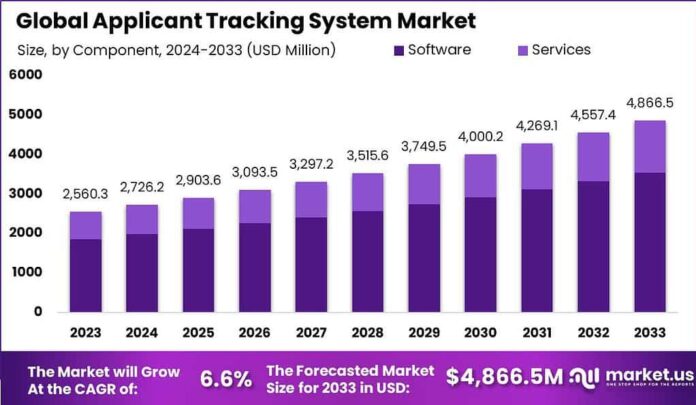The global job market is undergoing rapid transformation, and Applicant Tracking Systems (ATS) are at the forefront of this change. Designed to streamline hiring processes, ATS tools have become indispensable for organizations handling high volumes of job applications. As of 2024, the ATS market is valued at approximately $3.1 billion and is projected to grow at a CAGR of 6.7% through 2030, driven by advancements in artificial intelligence (AI) and cloud-based solutions.
An applicant tracking system is a software application that automates recruitment tasks. These include screening, tracking, and scheduling interviews of applicants. Recruiters are not required to look through every single application, as algorithms in the system scan resume for keywords related to the job description, thus ensuring efficiency and consistency in the selection process.
More than 98% of Fortune 500 companies use an ATS to control their hiring activities, which depicts its significance in large-scale hiring. Small- and medium-sized enterprises (SMEs) are also very quickly adopting ATS solutions to compete in the game of talent acquisition.
Key Advantages Driving ATS Adoption
Several advantages drive the adoption of the ATS, including:
Efficiency: An ATS reduces time-to-hire by 30%, allowing the recruiters to dedicate more time to other strategic tasks.
Cost-Effectiveness: Automated processes can save companies up to $10,000 per hire, particularly for roles with high application volumes.
Improved Candidate Experience: 70% of job seekers prefer timely updates, and ATS tools provide automated notifications to keep candidates informed.
Data Management: An ATS allows companies to store, analyze, and retrieve candidate data, ensuring streamlined hiring for future positions.
How Does an ATS Work?
When a candidate uploads his resume online, the ATS scans the document, scanning for keywords and phrases related to the job description. For instance, a software developer’s job might require terms such as “Java,” “C++,” or “Agile development.
According to statistics, 75% of resumes are rejected by ATS before they reach human recruiters, mostly due to formatting errors or missing keywords. In a bid to improve their chances, applicants are now tailoring their resumes to suit ATS-friendly formats.
Trends Shaping the ATS Market
The ATS market is evolving rapidly, and new trends are making recruitment smarter and more inclusive:
AI Integration: AI-powered ATS tools can analyze applicant behavior, predict job performance, and identify potential biases in job descriptions.
Cloud-Based Solutions: Cloud ATS adoption is rising, with 60% of companies preferring these systems for their flexibility and scalability.
Globalization: As remote work becomes more common, ATS tools are enabling companies to hire talent from across the globe, eliminating geographical barriers.
Challenges and Opportunities
Despite the many advantages of ATS tools, there are some shortcomings. Nearly 40% of recruiters believe that strict reliance on keyword matching can lead to the exclusion of qualified candidates. To this end, the developers of ATS tools are working to enhance contextual understanding so that there is a fairer selection process.
The Road Ahead
With innovations in AI and machine learning, the ATS market worldwide can reach as much as $5 billion by 2030. This system will better streamline the hiring process and increase diversity and inclusion in recruitment.
The Applicant Tracking Systems revolutionize the hiring process, making it a milestone shift. By automating key processes and leveraging cutting-edge technology, ATS tools help companies find top talent faster and more accurately. They are going to redefine recruitment for years to come as advancements continue.





